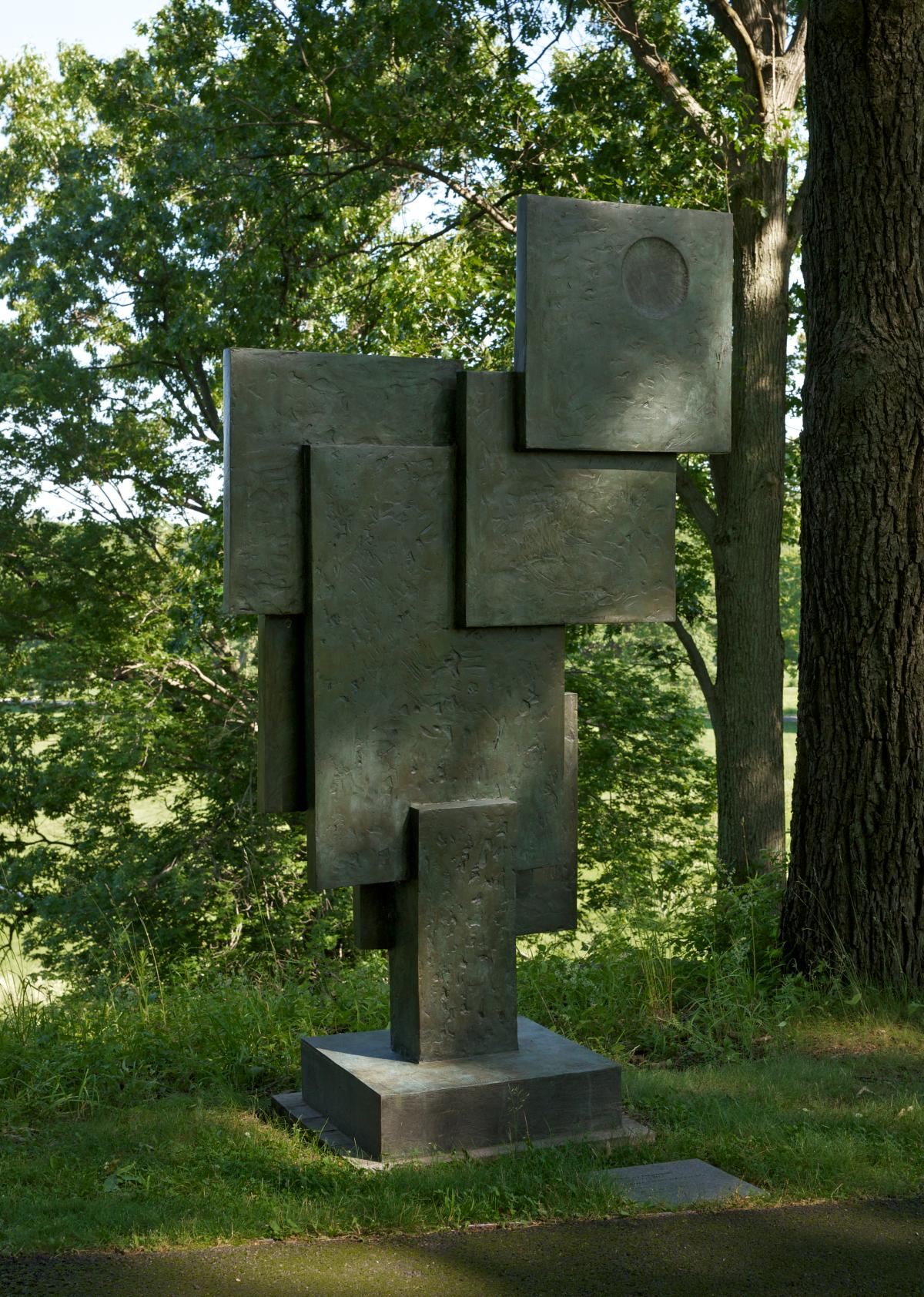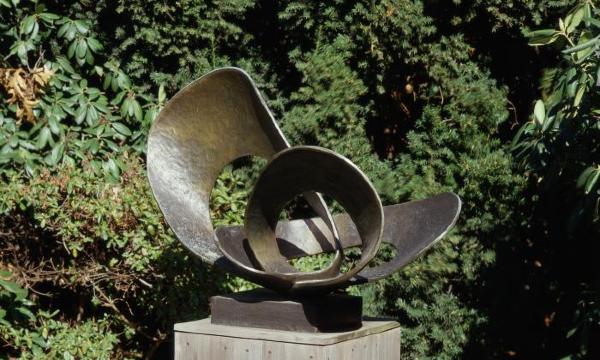On view

British, 1903–1975
Square Forms with Circles, 1963
Bronze
8 ft. 6 in. x 58 in. x 27 3/4 in. (259.1 x 147.3 x 70.5 cm)
Gift of the Ralph E. Ogden Foundation
Barbara Hepworth © Bowness
Photo by Jerry L. Thompson
Barbara Hepworth is a seminal figure of modern sculpture. Working across media in a career that spanned more than fifty years, she is best known for her wood, stone, and metal sculptures, though she also created paintings, works on paper, and photographs. Many of Hepworth’s early sculptures were carved from wood and stone. In 1956 she began casting in bronze, a medium that enabled her to experiment with a greater variety of shapes, as well as with larger-scale and outdoor works. It also allowed her to create more sculptures in the form of replicative editions, which dovetailed with greater commercial success and recognition. In addition to numerous solo shows at galleries and museums, Hepworth was awarded the Grand Prize at the 1959 Bienal de São Paulo, represented Great Britain at the 1960 Venice Biennale, and, in 1961, was commissioned to create an outdoor work for United Nations Plaza in New York City, which still stands today.
Hepworth was enthusiastic about showing her work in outdoor settings, where the geometry of their clear edges came into vivid contrast with nature’s curving shapes and lines. She said, “No sculpture really lives until it goes back to the landscape, the trees, air, and clouds.” Her interest in the human figure in landscapes is evident, albeit abstractly, in works such as Square Forms with Circles, in which the subtle placement of the square and rectangular forms and their delicately scraped and carved surfaces convey a mysterious presence. The sculpture, vertically oriented at a human scale, beckons the viewer to examine its components from multiple perspectives. Hepworth had lofty aspirations for what her work could accomplish. She said, “Sculpture is to me an affirmative statement of our will to live: whether it be small, to rest in the hand; or larger, to be embraced; or larger still, to force us to move around it and establish our rhythm of life.”
Hepworth was enthusiastic about showing her work in outdoor settings, where the geometry of their clear edges came into vivid contrast with nature’s curving shapes and lines. She said, “No sculpture really lives until it goes back to the landscape, the trees, air, and clouds.” Her interest in the human figure in landscapes is evident, albeit abstractly, in works such as Square Forms with Circles, in which the subtle placement of the square and rectangular forms and their delicately scraped and carved surfaces convey a mysterious presence. The sculpture, vertically oriented at a human scale, beckons the viewer to examine its components from multiple perspectives. Hepworth had lofty aspirations for what her work could accomplish. She said, “Sculpture is to me an affirmative statement of our will to live: whether it be small, to rest in the hand; or larger, to be embraced; or larger still, to force us to move around it and establish our rhythm of life.”

